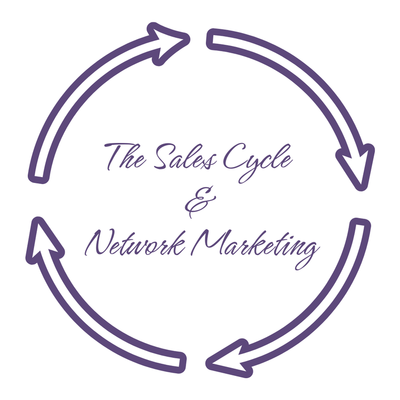
As the midpoint of the year approaches, it’s an opportune time for businesses to pause and conduct a thorough brand review. "Refreshing Your Brand: Mid-Year Review and Revamp Strategies" explores the importance of evaluating and revitalizing your brand to ensure it remains relevant, engaging, and aligned with your business goals. A mid-year brand review allows you to reflect on the first half of the year, analyze what has worked and what hasn’t, and make strategic adjustments to strengthen your brand’s presence and performance in the market. This proactive approach not only helps in addressing any inconsistencies or gaps in your branding but also reinvigorates your team and keeps your audience engaged and excited about your brand.
The first step in a successful mid-year brand review is conducting a comprehensive brand audit. This involves assessing all aspects of your brand, from visual identity and messaging to customer perception and market positioning. Start by evaluating your brand’s visual elements—logo, color scheme, typography, and overall design aesthetic. Ensure that these elements consistently reflect your brand’s values and resonate with your target audience. Next, analyze your brand messaging across different channels, including your website, social media, and marketing materials. Check for consistency in tone, voice, and key messages, ensuring that they align with your brand’s mission and vision. Collecting feedback from customers, employees, and stakeholders can provide valuable insights into how your brand is perceived and where improvements can be made.
Once the audit is complete, it’s time to identify areas that require revamping and develop a strategic plan to address them. This might include updating your visual identity, refining your brand messaging, or repositioning your brand in the market. If your brand’s visual elements are outdated or no longer resonate with your audience, consider a redesign that modernizes your look while staying true to your core identity. For brand messaging, focus on crafting clear, compelling narratives that communicate your unique value proposition and connect emotionally with your audience. If your market positioning needs adjustment, conduct market research to understand current trends, competitor strategies, and customer needs. This will help you refine your positioning strategy to differentiate your brand and appeal to your target market more effectively.
In the process of revamping your brand, engaging your audience through various touchpoints is essential to ensure a seamless transition and to maintain their trust and loyalty. Communicate the reasons behind your brand refresh openly and honestly with your audience. This transparency helps in managing expectations and fostering a sense of inclusion. Use your website, email newsletters, and social media platforms to share updates about the changes you’re making and the benefits these changes bring. Create engaging content, such as behind-the-scenes looks at the redesign process, interviews with key team members, or sneak peeks of new branding elements. This approach not only keeps your audience informed but also builds excitement and anticipation for the refreshed brand.
Additionally, consider how your brand refresh can enhance the customer experience. Evaluate every touchpoint where customers interact with your brand—from your website and social media to customer service and physical locations. Ensure that the updated branding is consistently applied across all these channels. A cohesive and unified brand experience reinforces your brand identity and makes it easier for customers to recognize and connect with your brand. For instance, if you’re updating your visual identity, ensure that all digital and print materials, packaging, and even employee uniforms reflect the new design. Consistency is key to making a strong impression and building a trustworthy brand image.
As you implement your brand refresh, it’s also crucial to monitor and measure the impact of these changes. Set clear, measurable goals for your brand revamp, such as increased brand awareness, improved customer engagement, or higher sales. Use analytics tools to track these metrics and gather data on how the changes are being received by your audience. Conduct surveys and solicit feedback from customers to understand their perceptions and experiences with the refreshed brand. This feedback loop is invaluable for making any necessary adjustments and ensuring that your brand refresh is meeting its objectives. Regularly reviewing these metrics and feedback will help you gauge the success of your brand revamp and make informed decisions for future brand strategies.
Embracing a brand refresh offers an excellent opportunity to re-align your company’s internal culture with its external messaging. Ensure that your team is fully informed and on board with the changes. Conduct training sessions and workshops to familiarize employees with the new brand guidelines and the reasons behind the refresh. Empower them to be brand ambassadors, confidently representing the new brand identity in their interactions with customers and stakeholders. A cohesive internal understanding and enthusiasm for the brand will naturally extend to your external communications, creating a more authentic and unified brand presence.
Moreover, leverage the momentum of a brand refresh to launch new marketing campaigns and initiatives. Use this as a catalyst to re-engage with existing customers and attract new ones. Introduce special promotions, events, or content that highlight the refreshed brand. For instance, a rebranded product launch event, an exclusive behind-the-scenes look at the rebranding process, or a customer appreciation campaign can generate buzz and interest. These initiatives not only spotlight the new brand identity but also reinforce the message that your company is evolving and committed to continuous improvement.
In conclusion, a mid-year brand review and refresh is not just about changing your logo or color scheme; it’s a strategic process that involves reassessing and realigning every aspect of your brand to ensure it remains relevant, engaging, and effective. By conducting a thorough brand audit, involving your audience, ensuring consistency across touchpoints, monitoring the impact, and leveraging internal culture and new marketing initiatives, you can successfully navigate the complexities of a brand refresh. This proactive approach not only revitalizes your brand but also sets the stage for sustained growth and success in the competitive market landscape. Remember, a refreshed brand that truly resonates with its audience can significantly enhance customer loyalty, attract new opportunities, and drive long-term business success.
.png)




